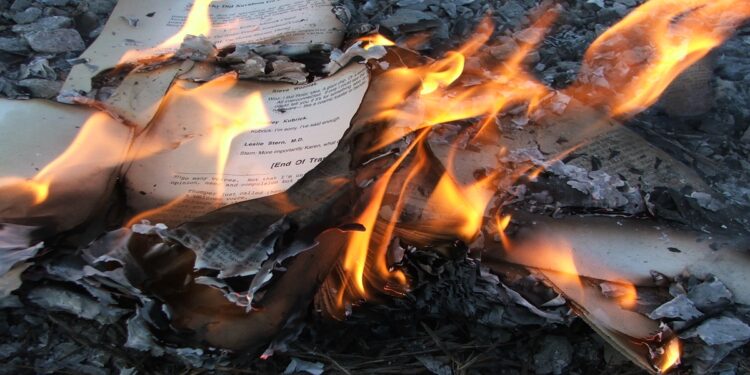“Powerful words cannot be distinguished,” says a remark in the video of veteran author Margaret Atwood, who, in collaboration with Penguin Random House, announced an ‘unburnable’ edition of her most famous work, The Handmaid’s Tale. This edition was not just meant for a burning act to signify censorship against dystopian literature conveyed in Atwood’s book, but was specially auctioned for $130,000 in New York this month. The amount raised will support PEN America’s crucial work to counter the national crisis of censorship.
However, in reality, the author hopes to raise awareness about the proliferating book banning and educational gag orders in American schools nationwide with the video that has already garnered over 5 billion potential views. “Free speech issues are being hotly debated… We hope it raises awareness and leads to reasoned discussion,” Atwood said in a statement.
PEN America has been at the forefront of the fight against this wave of censorship in American schools. Its recent report “Banned in the USA,” documented 1,586 instances of individual books being banned in 86 school districts in 26 states.
Even at the annual PEN Gala in New York, writer and actress Faith Salie said the unburnable book “was made to withstand not only the fire-breathing censors and blazing bigots, but actual flames, the ones they would like to use to burn down our democracy.”
The unburnable printed edition was made in black-and-white-coated aluminum Cinefoils, used in film production to wrap hot lights, which are stable to 660°C/1220°F, textblock hand-sewn with nickel wire, often used in electrical components, which is stable at 1400°C/2,600°F, head and tail bands are woven stainless steel, used in aerospace manufacturing, which are stable up to 1530°C/2790°F.
But book burning and banning has been sort of a ritual in the past. Right from the works of authors like Albert Einstein and Sigmund Freud to American authors such as Ernest Hemingway and Helen Keller, powerful leaders and despots have tried hard to kill, dissuade or ban and destroy many thought-provoking writings.
While the right to dissent does not seem to have lost its credibility, especially with the rise of social media, with desperate crackdown measures, photos and videos going viral, a pertinent question to ask here is, can this sort of activism kill ideas?
Book bans, burnings or educational gag orders are increasingly alarming in this era of free speech, especially when the censors’ primary targets have been literary works about racism, gender, and sexual orientation, often written by authors of colour and LGBTQ+ writers, as well as classroom lessons about social inequality, history, and sexuality.
On the other hand, books do have an emotive power and sometimes it can be dangerous, intolerant, oppressive or ugly. There is no doubt that in the past years book burning or banning have followed a pattern. Either they are offensive or violent or inappropriate for the reading public. JK Rowling’s Harry Potter series was removed from a school library in Tennessee due to the spells in the books being actual curses and risking humans with evil spirits. Not just Harry Potter books, but there are authors who have drawn flak for unattractive writings or hurting sentiments of the public.
A Farewell To Arms by Ernest Hemingway was a semi-autobiographical novel set during World War I, was banned from Boston newsstands for its sexual, ‘vulgar’ content and in Italy for its depiction of the army’s retreat in the battle of Caporetto. American Psycho by Bret Easton Ellis was censored in Queensland for its extreme scenes of graphic violence. The Diary of a Young Girl by Anne Frank was deeply influential and taken off shelves or reading lists for her maturing anatomy. Animal Farm by George Orwell was banned in the USSR until the 1980s and also banned from schools in the United Arab Emirates in 2002 for its depiction of a talking pig, which was felt to oppose Islamic values. Fifty Shades of Grey by EL James faced censure for its pornographic depiction. The Adventures of Huckleberry Finn by Mark Twain reinforced racial stereotypes. To Kill a Mockingbird by Harper Lee saw temporary bans in the US for racism. Recently, the Russian war on Ukraine scorched remains of paintings, sculptures and books burned as part of the destruction of Ukrainian cultural identity.














